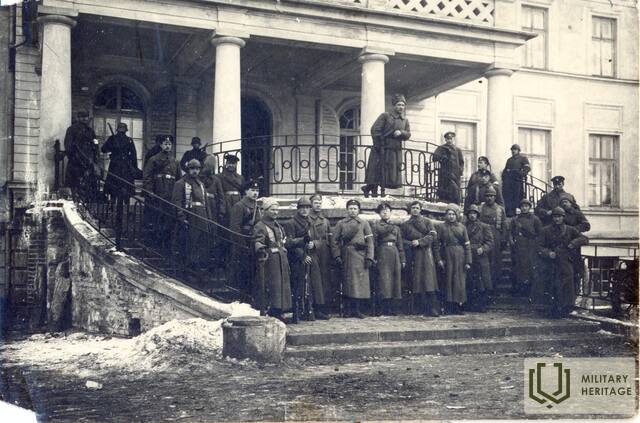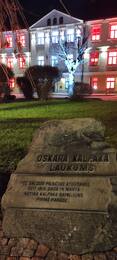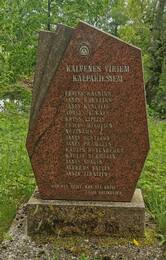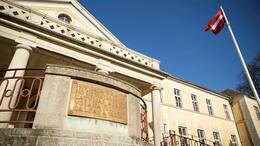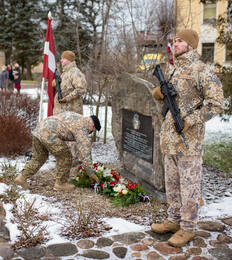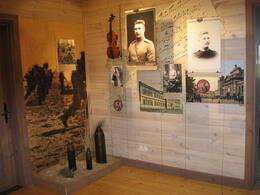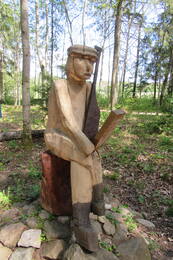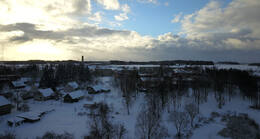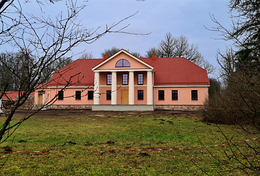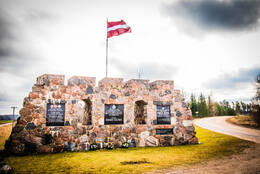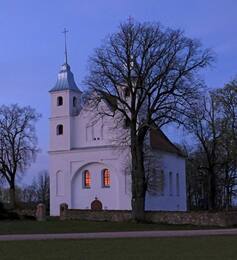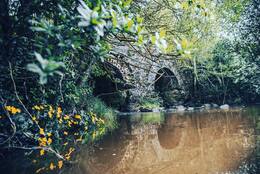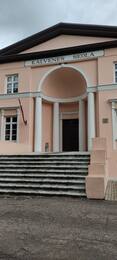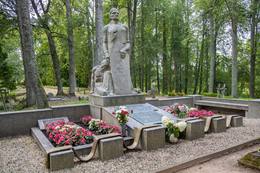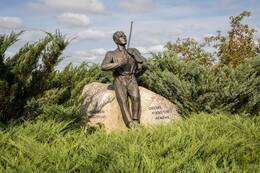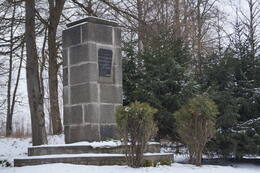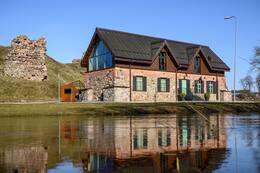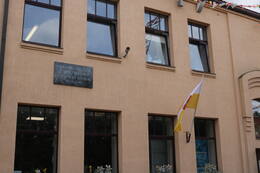Латвийский отдельный батальон
I Освободительные войны, I Первая мировая война, Первая независимость
Латышский отдельный батальон, также известный как Калпакский батальон (5 января 1919 - 20 марта 1919), был первым латышским вооруженным подразделением во время боев за свободу, входящим в состав Латвийской национальной гвардии или Балтийского ландвера.
21 марта 1919 года Временное правительство Латвии издало приказ о преобразовании Латышского отдельного батальона в Южную группу латышской армии, также известную как Южная латышская бригада.
Связанная хронология
Связанные объекты
Мемориальный камень на площади Оскараса Калпака в Салдусе
Площадь О. Калпака расположена в самом центре Салдуса, на пересечении улиц Лиела и Стрику.
Бывшая рыночная площадь сегодня является излюбленным местом отдыха жителей и гостей Салдуса, где проводятся концерты, памятные мероприятия и праздники. 10 марта 1919 года Салдус стал первым латвийским городом, освобожденным батальоном полковника Оскара Калпакса.
14 марта 1919 года на площади состоялся первый парад латышского отдельного батальона, а в 1992 году в честь полковника Калпакса площадь была названа его именем.
Памятник и памятные знаки солдатам батальона О. Калпака на кладбище Айзпора
Примерно на полпути между Рудбаржи и Кальве, на обочине старой дороги, параллельной шоссе A9, находится Айзпорское кладбище.
Здесь находится памятник и 12 мемориалов солдатам-добровольцам батальона Оскара Калпака, которые жили в окрестных домах.
Полуземлянка Айзпоре Кальвенской волости была самым дальним местом, куда 22 января 1919 года отступил Латышский отдельный батальон (Калпака). Здесь батальон получил первое подкрепление из Лиепаи - 35 человек и начал контратаку, достигнув Рудбаржи 24 января.
Идея возведения памятника возникла в 1920-х годах, когда бывшие солдаты 1-го латышского отдельного батальона, или батальона Калпака, установили временный памятный знак - блок дуба с мемориальной доской. Тогда же возникла идея создания более масштабного мемориального ансамбля, но реализована она была только 15 мая 1993 года, когда был открыт памятный знак - Луч света - обелиск из серого гранита.
Памятный знак высотой 2,3 м выполнен скульпторами Харийсом СПРИНЦИСОМ и Имантом ЛУКАЖИСОМ (1930 - 2007, похоронен на кладбище Айзпури), отец которого также был солдатом батальона О. Калпака. На памятном знаке выгравировано имя поэта Э.ВИРЗА:
КАЛПАКАМ
И ЕГО
СОЛДАТАМ
1919
УТРО 25 ЯНВАРЯ
С ЭТОГО ДНЯ
ТАКЖЕ ОТ
ПОЖАР
НАД ЛАТВИЕЙ
В то же время могилы 12 калпаков, похороненных на кладбище, были отмечены дубовыми мемориальными досками, которые в 2019 году были заменены на гранитные.
В начале 1990-х годов на кладбище был установлен двухметровый памятник, рядом с которым растет дуб, посаженный в середине 1990-х годов легендарным актером Эвалдом Валтерсом.
Замок поместья Рудбаржи и мемориальная доска 1-му латышскому отдельному батальону
Замок находится в Рудбаржи, на шоссе А9 Рига - Лиепая. Перед зданием установлена мемориальная доска в память о подвиге батальона Оскара Калпака.
Замок был построен в 1835 году как собственность семьи баронов фон Фиркс по приказу баронессы Теи фон Фиркс. 15 декабря 1905 года усадьба была сожжена революционерами. Реставрационные работы под руководством архитектора Л. Рейнерса начались три года спустя.
Во время войны за независимость Латвии замок Рудбаржи служил базой и штабом для боевых действий на берегах реки Вента под командованием 1-го отдельного латышского батальона полковника Оскара Калпакса.
Позже замок использовался как база отдыха для солдат латышской армии. В 1938 году замок был перестроен.
Во время Второй мировой войны в здании размещался госпиталь для солдат немецкой армии, а в послевоенные годы - школа для работников лесного хозяйства. В 1962 году замок стал Рудбаржской школой, которой в 1991 году было присвоено имя Оскара Калпакса. Зал героев усадьбы Рудбаржи был отреставрирован в 2016 году. В настоящее время школа закрыта, но в ближайшие годы в здании планируется разместить профессиональную военную среднюю школу имени Оскара Калпакса.
Мемориал битвы при Скрунде и День флага
Мемориал Скрундской битвы находится в центре Скрунды, в парке Оскараса Калпака, рядом с Домом культуры Скрунды, на пересечении улиц Кулдигас и Лиепаяс. В 2005 году на мемориале был установлен камень в память о сражении 29 января 1919 года, когда батальон под командованием Оскараса Калпака вместе с немецкими и русскими частями ландесвера освободил Скрунду от большевиков. С 2004 года поддерживается традиция празднования Дня флага в память о первом освобожденном от большевиков городе и его освободителях, которые 29 января 1919 года подняли латвийский флаг в церкви Скрунды.
В первые месяцы Войны за независимость Временное правительство Латвии под давлением большевиков стремительно теряло территории. 22 января 1919 года большевики захватили Скрунду. Неделю спустя, рано утром 29 января, началось наступление с целью захвата Скрунды. Латышский отдельный батальон под командованием подполковника Оскара Калпакса должен был атаковать вдоль шоссе Рудбаржу - Скрунда и выбить большевиков из Скрунды. За этим должна была последовать фланговая атака немецких частей с задачей уничтожить наступающего противника, а русская рота должна была атаковать между латышскими и немецкими частями, используя Скрундскую церковь в качестве ориентира. Атаку также поддерживала немецкая артиллерийская батарея. В день атаки мороз был 15 градусов, ярко светило солнце, калпаки должны были пересечь чистое поле, а большевики укрывались в каменных зданиях усадьбы. Большевики открыли огонь, когда до цепи атакующих оставалось около 300 метров, завязалась двусторонняя перестрелка, и солдаты под командованием Оскара Калпакса стремительно продвигались вперед, вынуждая противника прекратить огонь и отступить через Венту. После трехчасового боя Скрунда была взята около 9 часов утра, при этом латышский отдельный батальон имел только двух раненых.
Сражение при Скрунде имело огромное значение для морального духа солдат Временного правительства Латвии, вооруженных Спеком, так как это была фактически первая значительная победа в боях против большевиков. Кроме того, сам командир, Оскар Калпакс, проявил в бою особое мужество, своим примером призывая солдат не бояться.
Мемориальный музей Оскарса Калпакса «Айритес»
Музей Оскарса Калпакса «Айритес» расположен между Салдусом и Скрундой, недалеко от автомагистрали A9. В экспозиции представлена обширная информация о полковнике Оскарсе Калпаксе и его батальоне, показана история создания Латвийской национальной армии и мемориального комплекса «Айритес». Экспозиция музея раскрывает полковника Оскарса Калпакса как личность, как солдата и борца за независимость Латвии. Экспозиция дополнена записями воспоминаний в аудиоформате (на латышском, английском, немецком языках). Они выделяют важность исторических событий 1918/1919 гг. для защиты латвийской государственности. Здание музея отреставрировано. Вход свободный, экскурсия с гидом платная. Можно посетить зону отдыха, парк, полосу препятствий, различные занятия. Имеется зал для семинаров до 30 мест.
Тропа "Природа - сила" музея Оскара Калпакса
Природная тропа создана на прилегающей к музею территории и основана на идее оформления музея О. Калпакса и его окрестностей в 1936 г. Природная тропа бесплатна для индивидуальных посетителей музея.
На природной тропе представлены деревянные скульптуры, созданные во время организованного Кулдигским техникумом технологии и туризма пленэра на объединяющую тему - "За любовь к свободе". Также на выставке представлены широкоформатные картины, созданные на пленэре "Охраняй свое Отечество!" командами школьников из близлежащих регионов.
Для самых маленьких посетителей музея на природной тропе создана мини-аэродромная трасса.
Яунмуйжа и 1-й латышский отдельный батальон
В настоящее время Яунмуйжа, ранее Яунамуйжа, является населенным пунктом Кулдигского самоуправления и находится на дороге Скрунда - Эзере, в 7 километрах. Поселение было основано на месте бывшего полуусадебного дома Яунаского имения (Нойхоф).
3 марта 1919 года за это место произошел ожесточенный бой между частями 1-го латышского отдельного батальона под командованием полковника Оскара Калпакса и частями 2-го советского латышского стрелкового полка.
3 марта 1919 года началась операция "Tauwetter" ("Оттепель"), освобождение Курляндии, в ходе которой VI резервный корпус немецкой армии с ландесвером и его 1-м латышским батальоном начал наступление по всему фронту с целью оттеснить большевистские части к Лиелупе. Ранним утром 3 марта части 1-го латышского отдельного батальона - рота Цесиса, рота Студента и кавалерийский дивизион, усиленные артиллерийской батареей немецкого гауптмана Мюллера, переправились через Венту у Ленай и атаковали усадьбу Яунай, которую оборонял 2-й батальон 2-го советского латышского стрелкового полка. В ходе продолжавшегося несколько часов боя, постепенно занимая дома в окрестностях Яуна-муйжи, подразделения под командованием Калпака достигли Яуна-муйжи и перехватили шоссе Скрунда-Пампали, прервав продвижение противника и оттеснив его на восток. В Яунамуйже батальон получил в качестве трофеев канцелярские принадлежности и боеприпасы. Заняв позиции в близлежащих домах, батальон укрепился. 5 марта началась большевистская контратака, которая к вечеру была остановлена. 6 марта батальон возобновил атаку, заняв школу в Скрунде и продвигаясь в направлении района Айрите - Айзупджи.
Поместье Лэну
Замок-усадьба находится в деревне Лену, у реки Вента. В настоящее время замок находится в частной собственности, поэтому его можно увидеть только издалека.
С конца января по 3 марта 1919 года усадьба использовалась в качестве опорного пункта 1-м латышским отдельным батальоном. Латышский отдельный батальон должен был освободить окрестности усадьбы Лени, чтобы иметь возможность переправиться через реку напротив Яунмуйжи.
Поместье принадлежало барону Фридриху фон Фирксу, который также владел поместьями Рудбаржци и Сиексате. Усадьба была построена в 19 веке. Для барона замок Лену служил в основном местом для охоты и отдыха в выходные дни.
С 1927 по 1937 год в замке находилась школа, а во время советской оккупации - колхозный леспромхоз. В 1965 году здесь был открыт общественный центр. Ансамбль зданий подвергся многочисленным перестройкам, парк не сохранился. Сохранилось несколько хозяйственных построек.
Мемориал 1-го латышского отдельного батальона в Ленай и место передислокации на Венте
Памятник находится в Леньях, на перекрестке дорог возле Леньского поместья.
Памятник был открыт 8 ноября 2007 года. Его автором является скульптор Майя Энгеле. Автором и финансистом памятника является Янис Блюмс, отец которого, лейтенант Паулис Блюмс, 1-й лейтенант 1-го отдельного латышского батальона кавалерийской дивизии, организовал и возглавил переправу через реку 3 марта 1919 года с помощью 10 человек.
Каждый год 3 марта молодогвардейцы, военнослужащие и другие заинтересованные лица собираются здесь на памятное мероприятие в честь 1-го латышского отдельного батальона.
Римско-католическая церковь Святой Троицы в Лени
Церковь находится в деревне Лену Никрацкой волости Скрундского самоуправления на дороге Скрунда - Эмбуте.
Рядом с церковью протекает река Вента, берега которой в феврале 1919 года охраняли солдаты 1-го отдельного латышского батальона. Поскольку численность батальона не позволяла создать сплошную линию фронта, фронт охранялся часовыми. Один из них находился на берегу реки возле церкви. Церковные башни были полезны для наблюдения за окрестностями и другим берегом реки.
Бой в школе Скрунды
Школа Скрунда расположена в Пумпури, на 3-м км дороги Скрунда - Эзерес. Школа находится в частной собственности, поэтому ее можно осмотреть издалека.
В январе и марте 1919 года в районе школы 1-й латышский отдельный батальон сражался с частями 2-го латышского стрелкового полка Советской Латвии.
Бой у Скрундской школы произошел 22 января 1919 года. Перед лицом отступающего большевистского превосходства немецкие и латышские части расположились на западном берегу Венты, в то время как большевистские силы собрались в Салдусе для подготовки к более широкой операции, одновременно направив часть своих сил в направлении Скрунды. Чтобы захватить инициативу и попытаться разгромить большевистские силы по частям, 22 января рота Цесиса 1-го латышского отдельного батальона, усиленная 15 солдатами офицерской роты и немецкой ротой Радена на участке фронта в Скрунде, должна была атаковать в направлении Салдуса. Школа в Скрунде была назначена местом сбора обеих рот. Однако во время подготовительного этапа атаки обе роты были застигнуты врасплох большевистской атакой, которая заставила немецкие и латышские части отступить к Рудбаржи.
Второе столкновение у Скрундской школы произошло 6 марта 1919 года, когда Цесисская и Студенческая роты батальона под командованием полковника Оскара Калпакса нанесли врагу неожиданный удар, захватили Скрундскую школу и продолжили продвижение к Дутени, Энгурниеки и Айрите.
На стороне дороги Скрунда-Эзерес, недалеко от школы, где дорога пересекает реку Клуга, находится небольшой старинный каменный мост конца XIX века с двумя полуарочными арками для прохода реки. Дорога, ведущая через мост, использовалась в прошлом, но сейчас постепенно зарастает травой, так как теперь используется прилегающая асфальтированная дорога и мост. С этого каменного моста открывается великолепный вид, обогащенный скалистым руслом реки и берегами, покрытыми густыми деревьями. Место визуально очень привлекательно и подходит для велосипедных или пеших маршрутов.
Поместье Ташу - Падуре
Замок-усадьба Таси - Падуре в настоящее время известен как начальная школа Кальвене, основанная в 1922 году. Здание школы было построено в 19 веке в позднем классическом стиле как охотничий домик для графа Кейзерлинга.
В начале 1919 года здесь собрались первые мобилизованные мужчины, откликнувшиеся на призыв о мобилизации, и пришли в усадьбу. 22 января 1919 года здесь был создан Латышский отдельный кавалерийский отряд, один из командиров которого 24 января перешел в 1-й Латышский отдельный батальон под командованием О. Калпакса. Весь отряд (всего около 80 солдат) под командованием командира Арнольдса Артума-Хартманиса прибыл в Рудбаржи 1 марта.
Кальвенская начальная школа является национальным памятником культуры. В 1960-х годах замок был отремонтирован и приспособлен для нужд школы.
Усадьба Скрунда и экспозиция о радиолокационной станции «Скрунда»
В усадьбе Скрунда создана экспозиция, посвященная локатору Скрунды или радиолокационной станции «Скрунда» и Латвийскому народногму фронту в Скрунде. Радиолокационная станция «Скрунда» под кодовым названием «Комбинат» была системой предупреждения о ракетном нападении СССР в западном секторе. Топоним «Скрунда-2» означал особый «городок» (в / ч 18951), когда-то созданный для нужд Вооруженных сил СССР, расположенный в 5 км от Скрунды в направлении Кулдиги. Здесь работала радиолокационная станция «Днепр» и строилась новая, более современная радарная установка «Дарьал». Строительство было остановлено, а 4 мая 1995 года установка «Дарьял» была взорвана. Согласно межгосударственному соглашению, радиолокационная станция «Днепр» была отключена 31 августа 1998 года.
Место последнего упокоения полковника Оскара Калпака.
Расположен на кладбище Висагала, район Мадона.
10 июля 1927 года Оскару Калпаксу был открыт памятник работы Карлиса Зале и Арнольда Дзиркаля – композиция из трех фигур, в центре которой древний латышский воин со щитом и мечом в руке, а на обеих сторонам владеет солдат. У подножия скульптурной группы на гранитном основании установлена бронзовая плита с выгравированным на ней текстом, в который также входит стихотворение Эдуарда Вирзы, посвященное Калпаку.
Оскар Калпакс пал в 1919 году. 6 марта возле "Аирите", на обочине дороги Скрунда - Салдус, 18 сентября его останки были перенесены с северного кладбища Лиепаи на семейное кладбище в Висагале.
Памятник открыл генерал Й. Балодис, председатель Комитета памятников полковнику О. Калпаксу, при участии тогдашнего президента Г. Земгале, премьер-министра М. Скуениекса, председателя Сейма П. Калниньша, военного министра Р. Бангерским и К. Улманисом. Первый камень памятника был заложен 19 июня 1925 года. Камень для памятника взят из родного дома полковника на Сиенских болотах, О. Калпак в детстве любил играть на скрипке на этом камне.
Родной дом полковника Оскарса Калпакса «Лиепсалас» («Liepsalas») и последнее пристанище на кладбище Висагалс (Visagals)
Родовой мемориальный комплекс полковника Оскарса Калпакса в «Лиепсалас» находится между Мадоной и озером Лубанас. «Лиепсалас» - это родиной дом Калпакса. Мемориальный комплекс был создан здесь в 1997 году благодаря идее и средствам племянницы полковника Арии Калпаки-Грундмане (1922-2006). Мемориальный комплекс состоит из различных объектов окружающей среды и каменных скульптур, имеющих символическое значение, характеризующих латвийские этические и патриотические ценности. В самом большом здании находится экспозиция, посвященная истории борьбы за независимость Латвии и 22-летней истории свободной Латвии (1918-1940).
Памятник Оскарсу Калпаксу, созданный Карлисом Зале и Арнольдом Дзиркалисом, открытый в 1927 году, можно осмотреть на кладбище Висагала. Композиция из трех фигур, в центре которой изображен древний латышский воин со щитом и мечом в руке, по обе стороны от которого изображены по одному поверженному солдату. У подножия скульптурной группы на гранитном основании установлена бронзовая табличка с выгравированным на ней стихотворением Эдуарда Вирзы, посвященном Калпаксу. Оскарс Калпакс погиб 6 марта 1919 года под «Айрите» на обочине дороги Скрунда-Салдус.
Памятник, посвященный первому бою батальона Оскара Калпака в Лиелауце.
Он расположен недалеко от руин лютеранской церкви Лиелауце.
19 августа 1934 года возле Лиелауцкой лютеранской церкви был открыт памятник из серого гранита на месте первого боя батальона Оскара Калпака. Мемориал создан по проекту архитектора П. Дреймани. Битва за Лиелауце произошла в ночь с 15 на 16 января 1919 года между калпаками Чеса и Офицерской ротой с одной стороны и солдатами 2-го стрелкового полка. В начале 1950-х памятник был разрушен, но восстановлен в 1991 году.
Сокровищница Свободного государства
Уникальная экспозиция, посвященная истории военных и гражданских наград первого свободного Латвийского государства, а также различных организаций, связанных с деятельностью государственных и гражданских организаций в период от Освободительной войны Латвии до Второй мировой войны.
В выставочном доме выставлено несколько сотен различных исторических свидетельств из латвийских и зарубежных частных коллекций, охватывающих период с 1918 по 1940 год, раскрывающих страницы истории Латгалии и Резекне.
Мемориальная доска возле дома, где был основан Отдельный Бауский батальон
Мемориальная доска возле дома, где был основан Отдельный Бауский батальон, представляет собой мемориальную доску из черного шведского гранита, открытую 22 апреля 1935 года возле здания тогдашнего Крестьянского кредитного союза. Мемориальную доску установили муниципалитет Бауски совместно с общественными организациями города. В год первой коммунистической оккупации в доме размещались ЧК и милиция. В апреле 1941 года, выполняя приказ Бауской милиции и начальника ВЧК, ученик слесаря Вальдорфа попытался уничтожить мемориальную доску, но, желая ее спасти, ударил лишь в правый нижний угол, но затем заявил, что сломать ее невозможно. это. Он предложил покрасить тарелку белой известковой краской, что и было сделано. После того как фанатиков прогнали, краску смыли, но когда они вернулись, тарелку перекрасили. Во время возрождения оно снова очищается. Само здание было частично разрушено в 1944 году во время войны. Сегодня здание отреставрировано, сохранив при этом свой исторический масштаб. В здании размещаются коммерческие учреждения, а из исторического интерьера ничего не сохранилось. Осмотреть здание можно только снаружи.
Отдельный Бауский батальон был сформирован в Бауске 24 апреля 1919 года. Командующий немецкими войсками, дислоцированными в Бауске, не возражал против латвийской мобилизации и формирования батальона на основе всеобщей мобилизации, объявленной правительством Латвии с 22 по 24 апреля. На мобилизацию откликнулись около 300 граждан, были образованы три роты. Командирами рот были назначены латвийские офицеры, но командование батальоном первоначально было поручено немецкому лейтенанту Беттихеру, которого только в конце мая сменил латышский офицер - капитан В. Кевей-Гудже. Командующий расквартированными в Курземе немецкими войсками Ридигер фон дер Гольц запретил подчинять батальон Латвийской отдельной бригаде под командованием полковника Яниса Баложа, и он был включен в состав соединений 1-й немецкой гвардейской резервной дивизии, включившись в состав дивизия «Брандис», оборонявшая в это время Бауску. 28 апреля фанатики начали наступление на Бауску. В батальоне, участвовавшем в бою, на тот момент была вооружена всего лишь команда из 50 человек. Этому подразделению удалось изгнать фанатиков из Дерпельмуйжи, предотвратив критическую ситуацию и остановив атаку противника. Сразу после боя весь батальон был вооружен, но автоматического оружия немцы ему так и не дали. Первые пулеметы батальон получил в качестве трофеев в бою с гигантами 1 и 2 мая. Новые трофеи, а также 27 пленных разведгруппа батальона получила 11 мая в селе Перконишки на территории Литвы.
18 мая, когда началось новое масштабное наступление на Бауску, батальон находился на позициях на берегу Мусы перед мызой Церауксте, где отражал все атаки противника. После изгнания фанатиков из Риги 22 мая боевая деятельность батальона на этом участке фронта закончилась. Батальон прибыл на Латгальский фронт 5 августа, где занял позиции на линии Рубене — Изабелина, но уже 16 августа 1919 года был включен в состав вновь сформированного 3-го Елгавского пехотного полка как II батальон.
Замок Лиелауце и первый бой батальона Оскара Калпака
Усадьба Лиелауце с парком – объект, который в истории Латвии связан с первой битвой и победой Калпака, произошедшей в январе 1919 года во время Освободительной войны. Нынешний строительный ансамбль усадьбы в основном сформировался в XIX веке. в начале. Первоначально усадебный дом был построен в стиле ампир как двухэтажное здание с черепичной крышей. Хозяйственные постройки комплекса расположены дальше от усадьбы на окраине парка. В нем сохранились дом управляющего, позже перестроенный в дом культуры, конюшни, дом для прислуги, ледяной погреб на берегу пруда. Сохранился лишь фундамент зернохранилища, построенного в 1801 году, а вот объемы конусной мельницы, хоть и перестроенной, но хорошо сохранились. Кроме того, все еще можно увидеть усадебную рулевую рубку или сарай для карет.
После образования Латвийского государства здание поместья Лиелауце с прилегающим к нему озером, парком, постройками и определенным участком леса сначала было передано под учреждение детского дома, но он так и не был создан. В ноябре 1926 года кафедра лесного хозяйства сельскохозяйственного факультета Латвийского университета приняла в свои руки предоставленный Центральным земельным комитетом дворец Лиелауце для организации учебной практики с собственным парком и 59 га земли. После Второй мировой войны до 2009 года здесь располагалась начальная школа Лиелауце, но одновременно это была и сервисная гостиница LLU. В настоящее время усадьба и парк принадлежат ООО «Mudia». Пока техническое состояние усадьбы не будет улучшено, она недоступна для посетителей.
В ночь на 15 января 1919 года калпакский батальон выиграл первый бой под Лиелауце, отразив атаку красных. Это был первый важный бой Калпакского батальона, когда победа дала воинам особенно сильный моральный подъем.
В ходе отступления, 12 января, отдельный батальон латышей дошёл до замка поместья Лиелауце и обосновался там для отдыха, выставил охранные посты на окрестных дорогах. Ранним утром 16 января гвардейцы заметили противника, идущего по Добельскому шоссе, и успели предупредить находившихся во дворце. Первой в бой вступила Резервная офицерская рота, занявшая позиции возле усадебного здания. Рота Цесиса, разделенная на две части, попыталась окружить противника. Великаны сначала отступили, но затем перешли в контратаку, которую Цесисской роте удалось отбить. Противник был вынужден отступить. Первая победа над гигантами была одержана. Хотя на стороне калпакцев было четверо павших (поручик Карлис Дамбитис, поручик Фридрихс Лиепа, военный чиновник Вилис Цирулис и инструктор Янис Бувмейстарс) и восемь раненых, результат боя стимулировал желание солдат продолжать борьбу с врагом. . К сожалению, уже в тот же день отдельный латышский батальон был вынужден покинуть свои позиции, поскольку отступившая немецкая рота Радена проиграла бой под Вецауце.
Связанные истории
Визит генерала Ридигера фон дер Гольта в Рудбаржи в феврале 1919 года
В феврале 1919 года, после успешной антигерманской кампании в Финляндии, немецкий генерал Ридигер фон дер Гольц был назначен командующим немецкими вооруженными формированиями в Курляндии и Северной Литве, включая ландвер, в состав которого входил 1-й латышский батальон. Во время своего визита на фронт в феврале 1919 года он также прибыл в Рудбаржи. Лейтенант Янис Киселис, офицер особого назначения батальона, описал визит генерала в своих воспоминаниях.
1. Переправа латышского отдельного батальона «Вента» 3 марта 1919 г.
Одной из главных задач для подразделений 1-го латышского отдельного батальона было пересечь замерзшую реку Вента и построить через нее дорогу.
Воспоминания капитана Александра Левинга о рекогносцировке Венты у Лены
В феврале 1919 года по обе стороны реки Вента велась активная разведывательная деятельность. Капитан Александр Лоевинг, начальник кавалерийской дивизии, был одним из командиров разведывательных рейдов.
Бой у Скрундской школы 22 января 1919 г.
Воспоминания капитан-лейтенанта Яниса Киселиса о боях в Скрундской школе 22 января 1919 года




